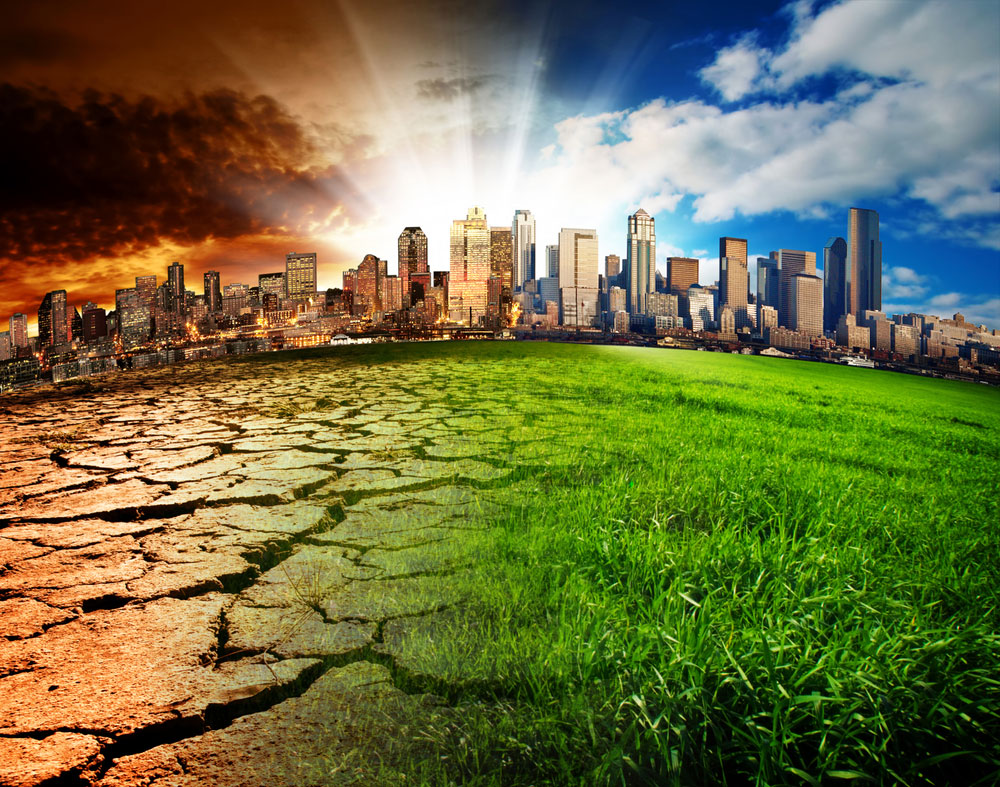Biodiversity refers to the diversity of life forms on earth. It is also a measure of variety and variability at the genetic, species, and ecosystem levels. Biodiversity provides a range of ecosystem services (Cultural, Provisioning, Regulating and Supporting), which are responsible for the existence and well-being of all life forms.
Urban biodiversity refers to the variety and variability among living organisms found in a city and the ecological systems in which they occur (1). It changes across various gradients (such as the peri-urban fringes and the city core) and habitats within a city. According to the SCBD (2012) (2) urban nature includes remnants of natural landscapes, traditional agricultural landscapes and urban-industrial landscapes. It is a common misconception that cities are deficient in biodiversity. Infact, some cities by virtue of their locations, such as those in biodiversity hotspots, have high species richness.
Biodiversity provides ecosystem goods and services and also has benefits such as Flood Control, Water Security, Food Security, Improved Human Health, Pollination, Climate Change Mitigation, Pollution Abatement, Livelihood Generation and Aesthetics (2). There is growing evidence that links loss of biodiversity and forests to zoonotic diseases (3, 4, and 5) through a complex web of interactions (6). The origins of server such diseases, as well as that of the greatest risks acknowledged in the current Global Risks Report (7), are related to environmental degradation.
One of the first publications that brought out the significance of urban biodiversity is the Cities and Biodiversity Outlook (2010) http://www.cbd.int/authorities/doc/cbo-1/cbd-cbo1-bookf.pdf. Co-developed by the Secretariat of the Convention on Biological Diversity, Stockholm University and ICLEI-Local Governments for Sustainability, the report provides a global assessment of the links between Urbanization, Biodiversity, and Ecosystem Services. As the world moves towards higher proportion of urbanised areas, the significance of urban biodiversity is going to increase further.
As Indian cities expand and urbanise, the land use undergoes extensive changes. The general trend observed is that agriculture land, green and open spaces are going down, while build-up area and construction in low-lying areas is growing (8). These land use changes have impacts on the natural and socio-economic functions within a city. Degraded natural environments lose their resilience, resulting in increased incidences of flooding, heat islands, local air pollution and adverse health impacts.

Photo courtesy: chombosan/Shutterstock
The fact cities expand and urbanise, the land use undergoes extensive changes. The general trend observed is that agriculture land, green and open space are going down, while built-up area and construction in low-lying areas is growing (8). These land use changes have impacts on the natural and socio-economic functions within a city. Degraded natural environments lose their resilience, resulting in increased incidences of flooding, heat islands, local air pollution and adverse health impacts.
The fact that urban biodiversity plays a significant role in India as well is highlighted from the fact that the Draft National Forest Policy, 2018 of the Government of India included a section on urban biodiversity. There are several tools, processes and policy interventions with regard to mainstreaming biodiversity conservations into urban planning. ICLEI South Asia has been taking up several initiatives on the same in cities across South Asia.
1. City Biodiversity Index
Developed and maintained by the Singapore National Park Department (NParks), with support from ICLEI, the CBD and others, the City Biodiversity Index is the only biodiversity index designed specifically for monitoring and evaluating biodiversity in cities. The index is also called the ‘Singapore Index (SI)’, so named in recognition of Singapore’s contribution and leadership. It is a self – assessment tool for cities to evaluate and monitor the progress of their biodiversity conservation efforts against their own individual baselines. The Climate Smart Cities Assessment Framework, launched by the Ministry of Housing and Urban Affairs, Government of India, has 30 indicators across 5 sectors, namely, (1) Energy and Green Building (2) Urban Planning Biodiversity and Green Cover (3) Mobility and Air (4) Water Resource Management and (5) Waste Management. City Biodiversity Index is an integral part of the evaluation matrix under Biodiversity in this Framework. Very few cities in India have developed the city Biodiversity Index. ICLEI South Asia has developed the City Biodiversity Index for several cities in India including Kochi, Hyderabad, Siliguri, Gangtok, Jammu, Srinagar, Rajkot and Dehradun and is supporting the development of the same for Bhopal and Indore.
2. Local Biodiversity and Action Plans
Development of Local Biodiversity Strategy and Action Plan (LBSAP) at the level of the urban local is mandatory as per the Biological Diversity Act, 2002. The LBSAP is a guiding strategy with specific actions suggested for local governments to achieve “optimal and realistic governance and management of biodiversity and ecosystem services”. The guidelines for development of SBSAP and LBSAP have recently been developed by ICLEI and have been accepted by the Secretariat of Convention on Biological Diversity. The methodology aims to develop the LBSAP in a scientifically informed and participatory manner. ICLEI South Asia has developed the LBSAP of Kochi, Gangtok snd Nagpur and is developing the same for Siliguri, Rajkot, Udaipur, Jammu and Sringar.
3. Illustrated Natural Asset Maps
A natural asset map helps to convey the natural assets (blue and green infrastructure) to the planners on a GIS platform. This map helps the city government in undertaking developmental planning while keeping biodiversity considerations in mind. An Illustrated Natural Asset map helps to communicate the significance of the urban biodiversity to citizens and the common man. Only seven cities in India have developed these illustrated natural asset maps- Kochi, Nagpur, On Gangtok, Jammu, Srinagar, Hyderabad and Panaji. All these have been developed by ICLEI South Asia.
4. Tree Cover Map of the city
The green cover map of a city helps the city to plan where the future plantations need to be undertaken. ICLEI South Asia has developed the tree cover maps for the cities of Rajkot, Vadodara and Hyderabad. In Hyderabad, a time series analysis, across a time frame of 20 years to map the increase in tree cover has also been carried out by ICLEI South Asia Maps with ward wise tree cover have also been developed for these cities. In the city of Nagpur, in collaboration with WWF, a detailed tree inventory map for a selected area in the city has been developed by ICLEI South Asia.

Photo courtesy: NASA Global Climate Change
5. Communicating Need for Biodiversity Conservation in cities
Generating awareness is on the key aspects of urban biodiversity conservation. ICLEI South Asia has developed several publications (comic books, pictorial tree handbooks) for the same. A pollinator garden, herbal garden and nature Interpretation centre has been developed by ICLEI South Asia in Kochi.
6. Developing Guidelines for Use by Urban Local Bodies
ICLEI South Asia undertakes extensive capacity building of the municipal officials and has also developed guidelines for several methods to increase green cover for the urban local bodies. This includes open green space plan as well as guidelines for development of Miyawaki forests. These simple tools have been designed in a manner that they are easily implementable by urban local bodies.
Several cities in India have started championing the cause of urban biodiversity and are serving as the pioneers in this field. Cities in India are now focussing on developing green cover maps, city biodiversity index, PBR, Local Biodiversity Strategy and Action Plans. There is a significant focus on increasing the green cover in cities and several techniques like restoration of degraded sites, development of urban forests through Miyawaki technique, development of open spaces and undertaking avenue plantations with a focus on native species. Initiatives focused on conservation urban biodiversity are being budgeted for by cities in their annual municipal budgets as well.
Efforts being taken by cities in to mainstream biodiversity conservation needs to be recognised, along with addressing issues like lake of technical expertise and financial constraints. Undertaking sustainable development that integrates biodiversity conservation and urban planning is the need of the hour. This will help to undertake climate resilient, low carbon, sustainable urban development in all urban cities across India.
References
1. Puppim de Oliveira J.A., Doll C.N.H., M oreno-Penaranda R., Balabam O. (2014). Urban Biodiversity and Climate Chang. In: Freedam B. (eds) Global Environmental Change. Handbook of Global Environmental Pollution, vol 1. Springer, Dordrecht
2. Secretariat of the Convention on Biological Diversity (2012). Cities and Biodiversity Outlook. Montreal, 64 pages.
3. Keesing F., Belden K., Daszak P., Dobson A., Drew Harvell C., Holt R.D., Hudson p., Jolles A., Jones K.E., Charles E.M., Myers S.S., Bogich T., Ostfeld R.S. (2010). Impacts of biodiversity on the emergence and transmission of infectious diseases. Nature 468, 647-652.
4. Allen T., Murray K.A., Zambrana T.C., Di Marco M., Breit N., Olival K.J., Daszak P. (2017). Global hotspots and correlates of emerging zoonotic diseases. Net. Commun. 8,1124.
5. Jones K.E., Patel, N., Levy, M. Storeyguard A. (2008). Global trends in emerging infectious diseases. Nature. 451,990-993.
6. Di Marco M., Baker M.L., Daszak P. (2020). Sustainable development must account for pandemic risk. PNAS. 117 (8), 3888-3892.
7. World economic Forum (2020). Global Risks Report 2020. http://reports.weforum.org/globl-risks-report-2020/
8. Garg A., Vidhee A., and Parihar S. (2018). Land use change Trends of Indian Cities: A Bird’s-Eye View Vulnerabilities of Unplanned Urban Growth. SAGE Publications India Pvt Ltd.
9. McMichael, A. J., Friel, S., Nyong A., and Corvalan, C. (2008). Global environmental changes and health: impacts, inequalities, and the health sector. BMJ (Clinical research ed.), 336(7637), 191-194.
Vardhman Envirotech
India’s Passionate rainwater company
This article is published on: – SOCLEEN MAGAZINE – FEBRUARY 2023
Author: – Dr: Monalisa Sen
We would like to spread this for the benefit of fellow Indians.
